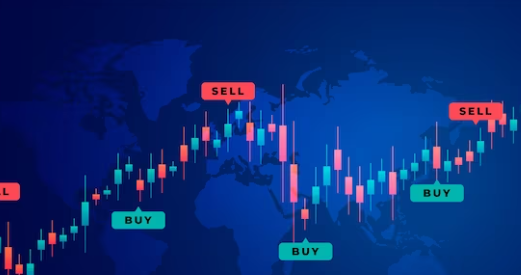
Cfds and Leverage: A Double-Edged Sword
CFD trading, also known as Contract for Difference trading, is a form of trading that allows investors to speculate on price movements of financial assets without owning the underlying asset. This means that traders can take advantage of market movements in various assets such as stocks, commodities, currencies, and indices. This type of trading has become increasingly popular in recent years, especially among retail traders. In this blog post, we will provide an overview of the basics of CFD trading and help you understand the ins and outs of this exciting investment opportunity.
Understanding the concept of CFD trading:
Cfds are contracts that enable traders to profit from changes in the price of assets without owning them. Cfds are based on leverage, which allows you to trade large amounts of assets with a small deposit. This means that traders can magnify their profits but also their losses. When trading Cfds, you agree to exchange the difference in the price of an asset between the time a contract is opened and the time it is closed.
Advantages and disadvantages of CFD trading:
CFD trading offers several advantages. First, it allows traders to access a wide range of asset classes without the need to own the underlying asset. Additionally, Cfds provide traders with leverage, which can magnify their profits. However, CFD trading also has its disadvantages. It is a risky form of investment as you can lose more money than you initially deposited. Moreover, Cfds can be expensive as they come with fees and commissions.
How to trade Cfds:
To start trading Cfds, you will need to open a CFD trading account with a broker that offers CFD trading. Once you have an account, you will need to deposit funds into it to start trading. Then, you can choose the asset you want to trade and set up your trading parameters, such as the amount you want to invest and the stop-loss limit to minimize your potential losses. You can place buy or sell orders depending on your market prediction.
Risk management strategies:
CFD trading is a high-risk investment, and traders need to implement risk management strategies to mitigate potential losses. One of the key risk management strategies is setting a stop-loss limit, which closes your trade if the market moves against you, preventing further losses. Additionally, traders should avoid over-leveraging, which can magnify losses. Another useful strategy is diversification, which involves trading multiple assets across different markets to spread risks.
Tips for successful CFD trading:
To become a successful CFD trader, you need to have a solid understanding of the market and the assets you are trading. It is essential to stay up-to-date with the latest market news and events that can impact the price of assets. Additionally, you should have a trading plan and stick to it, avoiding emotional trading decisions. Moreover, traders should choose a reputable broker that offers competitive trading conditions, reliable customer support, and a user-friendly platform.
Conclusion:
what is cfds trading offers exciting investment opportunities in various markets, but it also comes with risks. Before starting CFD trading, it is essential to understand the basics of how it works, its advantages and disadvantages, and how to manage risks. Successful CFD trading requires a disciplined approach, sound risk management strategies, and a commitment to stay informed about market news and events. By following these guidelines, you can increase your chances of success in the dynamic world of CFD trading.
Proudly powered by WordPress. Theme by Infigo Software.